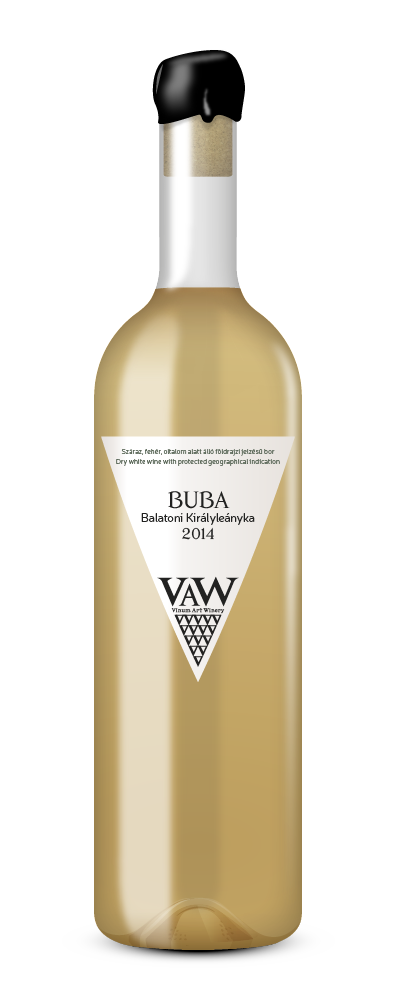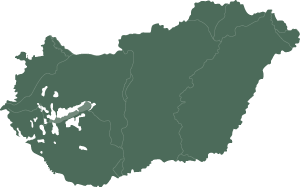Personal opinion:
Charming, gracious and youthful. This 2014 Királyleányka impressed me not only with its flavour but its aroma and colour are also fine. The muscatel taste discreetly emerges in its taste. A fine, harmonic wine with a fruity aroma. It is a unisex wine that I safely take out on any day of the year.
Gastronomical pairing:
I tasted it with fish filled with celery and garlic - naturally grilled. Disappointment is out of question.
About the Királyleányka or “Princess” variety:
The Királyleányka is a white wine grape variety recognized by the Hungarian state in 1973. It is a Transylvanian grape. It is a natural hybrid of the Kövérszőlő (Fat grape) and the Leányka (Maiden).
Its stock is of strong growth, and has bushy canes. Its leaves are dark green, medium-sized, kidney-shaped, wide, wavy, smooth, its structure is shiny, greasy, tears hardly, proportioned-lobed. Its cluster is small, thick, packed and cone-shaped. Its berries are small, whitish green, velveted, succulent with a slight muscatel taste. It ripens at the end of September and has an abundant yield. Its wine has a slight muscatel or floral aroma, it is fine and harmonic.
The region and its history:
In the Badacsony area, vines were grown in Roman times, and Emperor Probus had sizeable plantings here. At the time of the settlement of the Magyars in Hungary they already knew about vines and wine. They appreciated areas capable of growing vine. A significant part of the wine region was taken over by the church in the 13th century. In the 18th-19th century the Badacsony vermouth gained a similar reputation to that of the Tokaj aszú in Europe.
During the reconstruction after the phylloxera epidemic, supporting walls were built to prevent soil erosion. New varieties also entered the area. The Szürkebarát was introduced from France by monks. Due to the special soil content it evolved into a typical local variety, the Szürkebarát, which botrytises in good years.
The variety grown in the biggest amount is Olaszrizling that is in better years ripened on the stock longer, and is used to make ice wine or late-harvest hand-selected Olaszrizling. Szürkebarát, Tramini, Sárga muskotály, Rajnai rizling and Chardonnay are also present on the larger lands.
Kéknyelű or " Blue Stem" used to be a characteristic wine of the region. It was significantly confined by the frost damage of the 1980's but is experiencing a revival today, and will be an emblematic wine of the Badacsony region again in the near future.
Badacsony wines are typically full-bodied, fiery, aromatic and mineralized. Traditional wine-making and maturation in wooden barrels are characteristic. Although reductive wine-making and other modern technologies are also spreading, they have not significantly changed the character of the region's wine, yet.
Climate and geography:
Badacsony is the highest mountain in the Tapolca Basin; it stands between two bays of Lake Balaton. The circumference of the almost round mountain is 11km, the diametre of its top region slightly elongated in the north-south direction is 1-1.5km, its highest point is 437.4 metres above sea level. Its hillside is covered up to 280 metres by various loose deposits that are excellent for growing vine, and its soil is basalt-based loess. It is covered by various loose deposit, Pannon clay and Pannon loess, above which there are basalt rocks. Its climate is mild and balanced with high humidity. Because of the proximity of Lake Balaton the southern hills can also enjoy the sunshine reflected from the surface of the water, therefore there is a very beneficial microclimate that makes the making of natural dessert wine possible.
The wine region includes the vine cadastre-based first and second class border sections of the following settlements: Ábrahámhegy, Badacsonytomaj, Badacsonytördemic, Balatonrendes, Balatonszepezd, Diszel, Gyulakeszi, Hegymagas, Káptalantóti, Kisapáti, Kővágóörs, Nemesgulács, Raposka, Révfülöp, Salföld, Szigliget, Tapolca.
NAME: BUBA
YEAR: 2014
VARIETY: Királyleányka
WINE REGION: Badacsony
CLASS: Dry white wine with protected geographical indication
Product of Hungary
Bottle volume: 750ml
Alc. 12%vol
Contains sulphites


